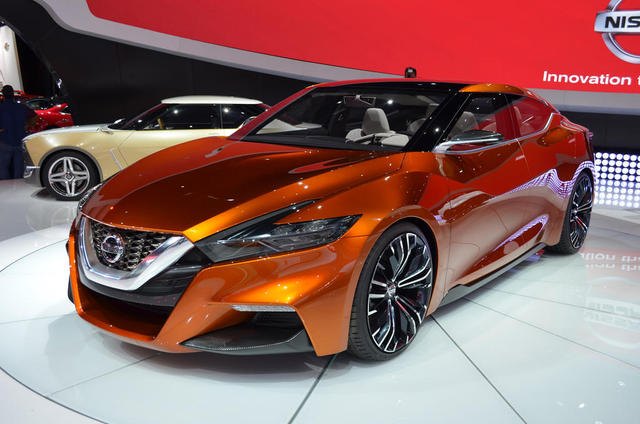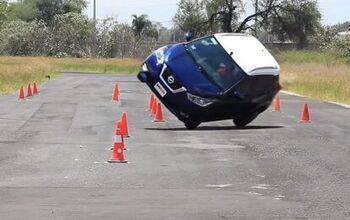Nissan Outsold By Honda In Home, U.S. Markets
Though Nissan remains Japan’s second-biggest automaker with a wide gap ahead of Honda, the latter continues to outsell the former in the United States and at home, much to Nissan’s dismay
According Automotive News, Nissan’s global sales for 2013 increased 3 percent to 5.1 million units, while Honda’s rapid 12 percent growth in sales only managed 4.3 million units in the same period. Further, Nissan sold 86 percent of its 5.1 million vehicles — 4.4 million, to be exact — outside Japan, Honda doing as well by selling 3.5 million of its 4.3 million overseas. Overall, Nissan beat Honda in Europe, Mexico, China and most of Asia, yet lost to Honda in Japan and the U.S.
At home, the reason is due to Honda’s popular line of kei cars (all made in house), and all having undergone a total revamping as of late. Meanwhile, Nissan has partnered with Mitsubishi to make kei cars after years of farming out the practice to the former’s rivals. Though things appear to be looking up for Nissan, they will be looking up at Honda for a good while: Honda sold just over 400,000 kei cars in 2013 to Nissan’s 186,000, while also growing 27 percent in kei car sales against the latter’s 21 percent.
Across the Pacific, Nissan is gaining on Honda’s other home turf, selling 1.2 million units for a 9 percent increase in sales against their rival’s 7 percent increase and 1.5 million units in 2013. Market share in the U.S. held at 9.8 percent for Honda while Nissan took a tenth of a percentage for an even 8 percent in the same period.
Though Honda has done well for itself since becoming the first Japanese auto manufacturer to build a factory in the United States back in 1982 for the Honda Accord — such as exporting more cars around the world from the U.S. than from Japan in 2013 for the first time ever — Nissan aims to turn up the heat through the tandem of new production coming from Mexico, and aggressive tactics devised by Nissan North America’s new chairman Jose Munoz, who is under standing orders to boost his employer’s share of the U.S. market to 10 percent.
Either way, both Honda and Nissan still have a ways to go to take on Toyota; the No. 1 Japanese and global automaker moved 9.98 million units worldwide in 2013.
More by TTAC Staff
Latest Car Reviews
Read moreLatest Product Reviews
Read moreRecent Comments
- GrumpyOldMan The "Junior" name was good enough for the German DKW in 1959-1963:https://en.wikipedia.org/wiki/DKW_Junior
- Philip I love seeing these stories regarding concepts that I have vague memories of from collector magazines, books, etc (usually by the esteemed Richard Langworth who I credit for most of my car history knowledge!!!). On a tangent here, I remember reading Lee Iacocca's autobiography in the late 1980s, and being impressed, though on a second reading, my older and self realized why Henry Ford II must have found him irritating. He took credit for and boasted about everything successful being his alone, and sidestepped anything that was unsuccessful. Although a very interesting about some of the history of the US car industry from the 1950s through the 1980s, one needs to remind oneself of the subjective recounting in this book. Iacocca mentioned Henry II's motto "Never complain; never explain" which is basically the M.O. of the Royal Family, so few heard his side of the story. I first began to question Iacocca's rationale when he calls himself "The Father of the Mustang". He even said how so many people have taken credit for the Mustang that he would hate to be seen in public with the mother. To me, much of the Mustang's success needs to be credited to the DESIGNER Joe Oros. If the car did not have that iconic appearance, it wouldn't have become an icon. Of course accounting (making it affordable), marketing (identifying and understanding the car's market) and engineering (building a car from a Falcon base to meet the cost and marketing goals) were also instrumental, as well as Iacocca's leadership....but truth be told, I don't give him much credit at all. If he did it all, it would have looked as dowdy as a 1980s K-car. He simply did not grasp car style and design like a Bill Mitchell or John Delorean at GM. Hell, in the same book he claims credit for the Brougham era four-door Thunderbird with landau bars (ugh) and putting a "Rolls-Royce grille" on the Continental Mark III. Interesting ideas, but made the cars look chintzy, old-fashioned and pretentious. Dean Martin found them cool as "Matt Helm" in the late 1960s, but he was already well into middle age by then. It's hard not to laugh at these cartoon vehicles.
- Dwford The real crime is not bringing this EV to the US (along with the Jeep Avenger EV)
- Kwik_Shift_Pro4X Another Hyunkia'sis? 🙈
- SCE to AUX "Hyundai told us that perhaps he or she is a performance enthusiast who is EV hesitant."I'm not so sure. If you're 'EV hesitant', you're not going to jump into a $66k performance car for your first EV experience, especially with its compromised range. Unless this car is purchased as a weekend toy, which perhaps Hyundai is describing.Quite the opposite, I think this car is for a 2nd-time EV buyer (like me*) who understands what they're getting into. Even the Model 3 Performance is a less overt track star.*But since I have no interest in owning a performance car, this one wouldn't be for me. A heavily-discounted standard Ioniq 5 (or 6) would be fine.Tim - When you say the car is longer and wider, is that achieved with cladding changes, or metal (like the Raptor)?


































Comments
Join the conversation
Well, at least Nissan has the world's best-selling electric car, but that's little comfort.
Few years ago they were about the same size, even Honda was Japan´s No.2. The difference between them i would say globally is that Nissan was sooner in CHina + is bigger there and Nissan has trucks-pickups or commercial vans - actually that´s why i believe is Nissan more popular in poorer less developed countires in Africa or Asia- because on those roads you need SUV´s pickups - that´s where Nissan is stronger, but with those markets growing and Hona expertise in small cars - with good fuel consumption Honda will be catching up fast, like ASEAN - where Honda is now really growing fast. About US and Japan and Honda being bigger - well in US Honda was always bigger, their were sooner there, Honda is very popular, if Toyota wouldn´t be global No.1 and have such big line-up of vehicles in all categories i would say Honda would be No.1 Asian brand in US About Japan- well one year is Honda bigger, next year Nissan - it is ot such important, currently kei cars are at their peak - about 40% of Japan´s market and Honda last year started with new minicars like Honda N-box and so on so they get the momentum, in regular cars Nissan is bigger